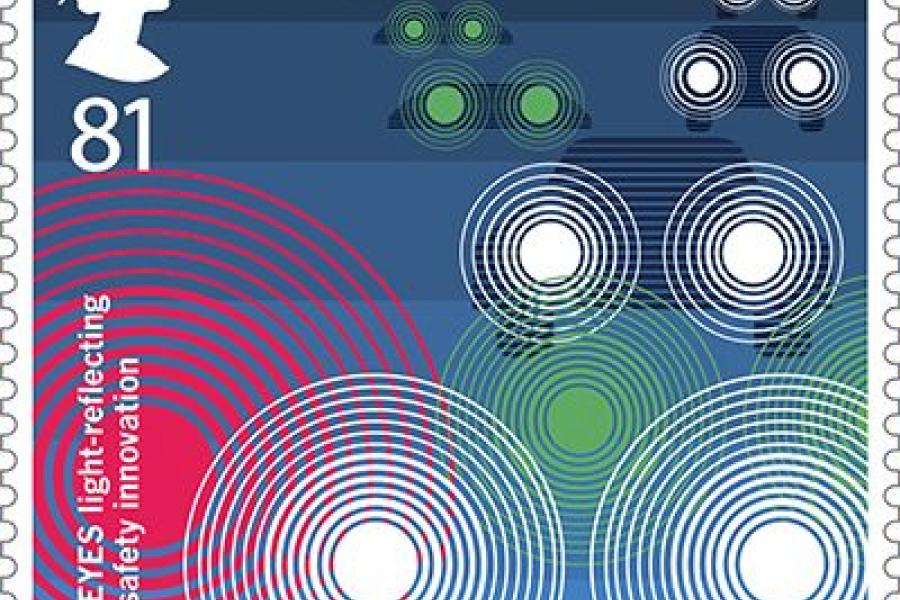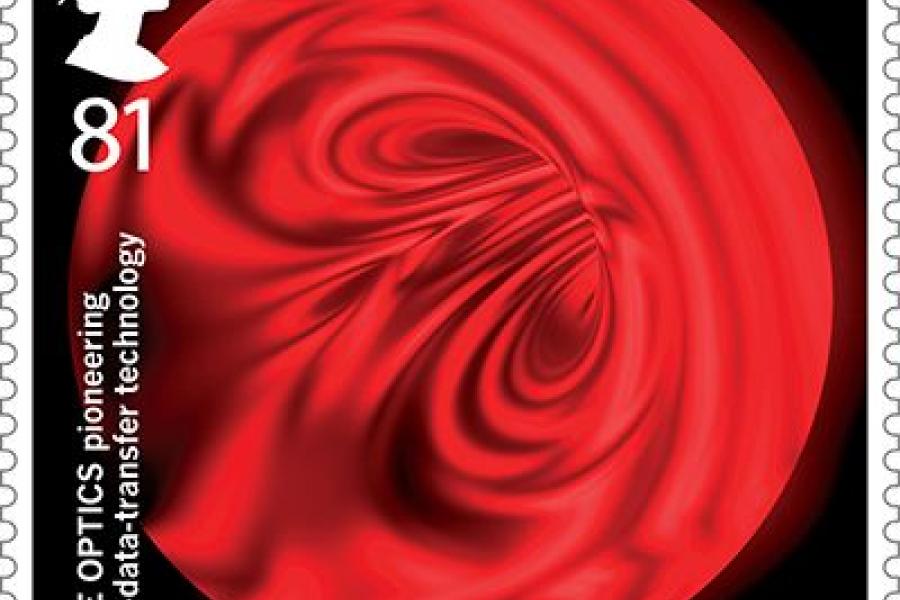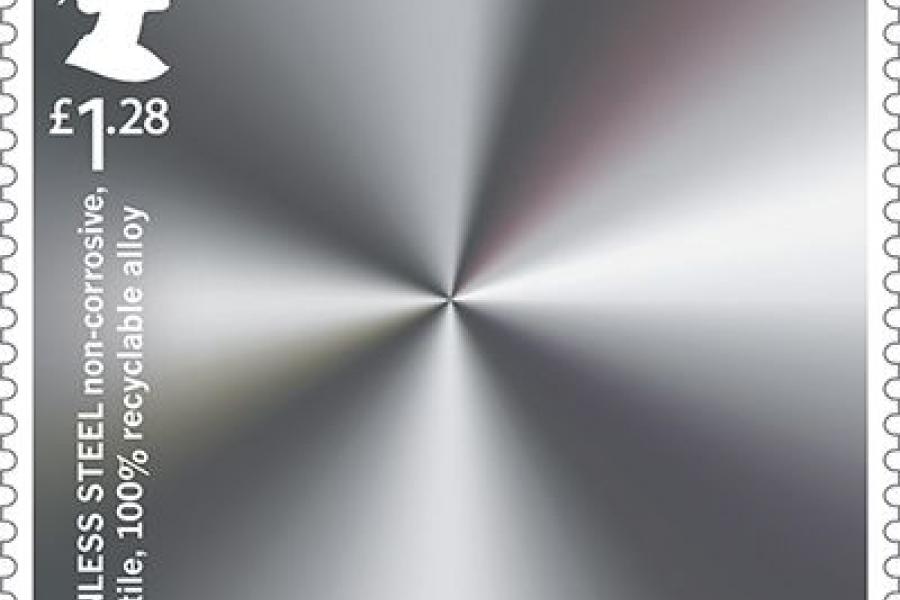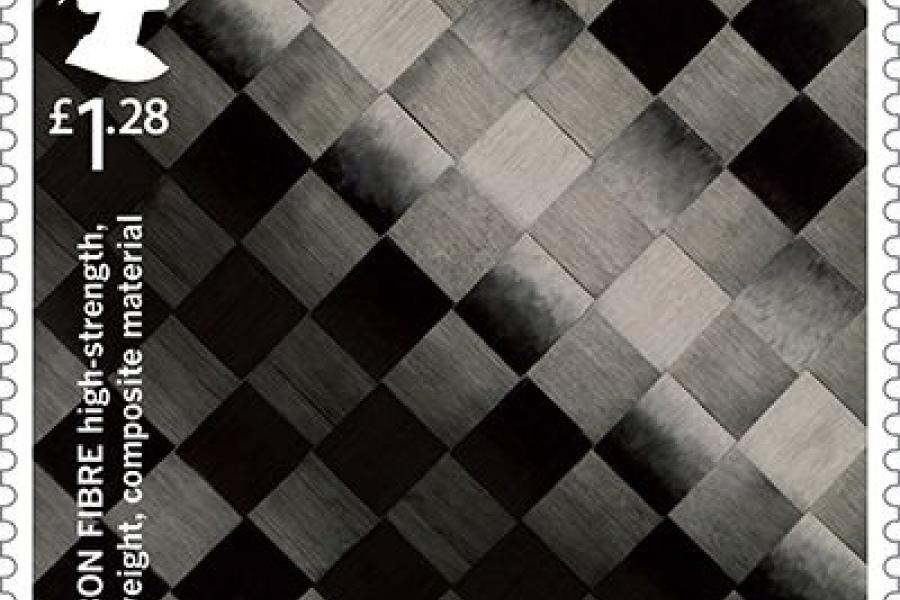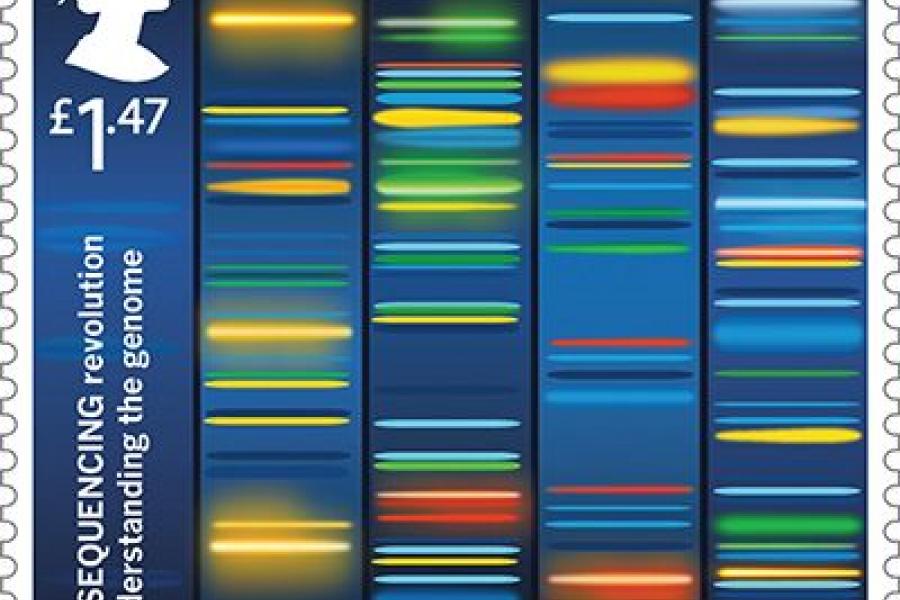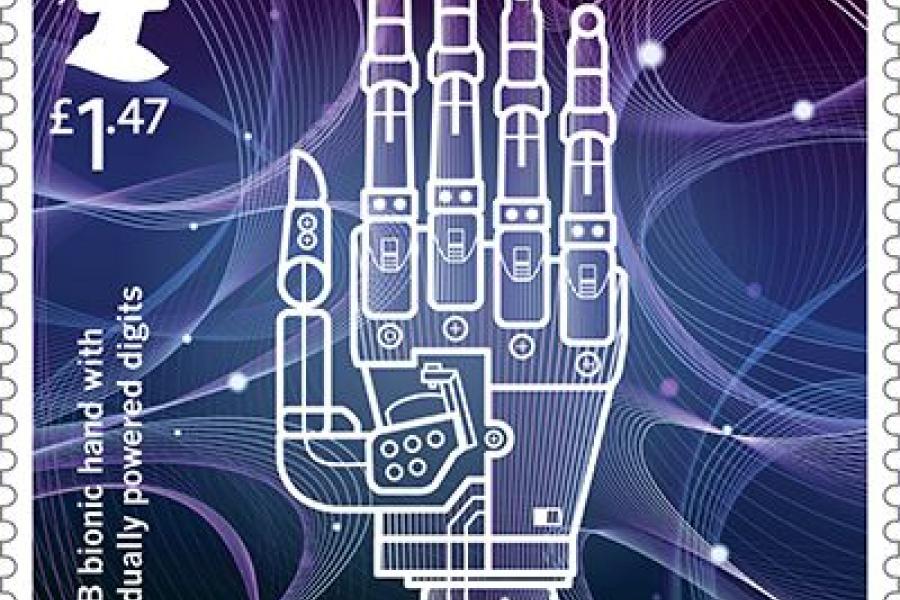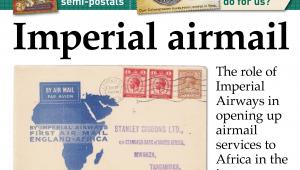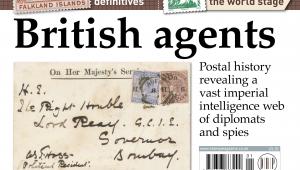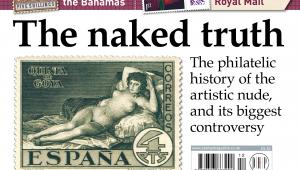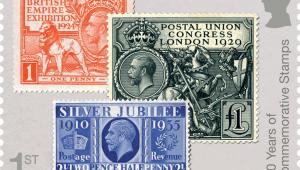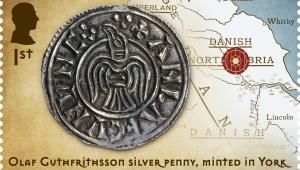Inventive Britain
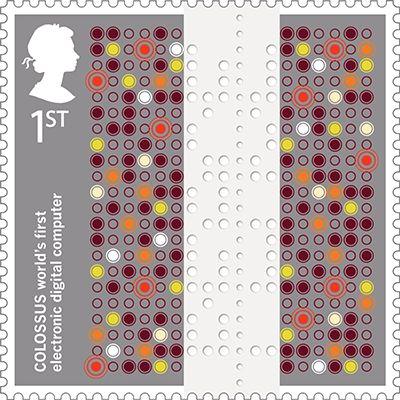
Royal Mail’s Inventive Britain set, to be issued on February 19, celebrates the country’s long and proud history of developing world-changing innovations.
It features eight key British inventions of the past century or so in a range of disciplines, from materials technology to medicine.
Available as four se-tenant pairs, the stamps were designed by GBH, which created original visual interpretations of the inventions for six of the stamps, while the other two are based on existing and computer-generated imagery.
The set was printed by lithography by International Security Printers.
1st class COLOSSUS
The world’s first electronic computer was created by Tommy Flowers, working at the General Post Office Research Station in Dollis Hill. Completed in 1943, it sped up the process of deciphering German coded messages during World War II and helped with the planning of D-Day in 1944.
1st class WORLD WIDE WEB
The revolutionary communications system was initially developed in 1989 by Tim Berners-Lee to help scientists connected with CERN, the European particle physics laboratory, to share information more easily. He created the protocols and computer language to turn it into a freely available global network by 1993.
81p CATSEYES
The road safety innovation created by Percy Shaw in 1934 involved building light-reflecting studs into road surfaces to clarify lanes. Embedded in rubber in a cast iron base, they are robust enough to withstand all weathers and heavy traffic, and even clean themselves with water when compressed by vehicles.
81p FIBRE OPTICS
The rapid data-transfer technology first demonstrated in 1966 by Charles Kao and George Hockham is based on sending pulses of laser light through ultra-thin pipes of purified glass, bundled together in cables. It allows digital information to be transmitted in vast quantities and at huge speeds.
£1.28 STAINLESS STEEL
Steel that was resistant to corrosion was created for the first time by Harry Brearley in 1913. It is made mainly from iron, which gives it strength, but with a significant amount of chromium, which makes it stainless. The alloy is both versatile, being used to make products from cutlery to skyscrapers, and recyclable.
£1.28 CARBON FIBRE
The new composite material developed by William Watt at the Royal Aircraft Establishment in 1964 incorporated filaments of carbon into resin and baked it to produce a reinforced plastic that was both stronger and lighter than metal. It can be moulded into any shape required, and its uses range from aircraft to racing cars.
£1.47 DNA SEQUENCING
A revolution in understanding the genomes of animals and plants came when Frederick Sanger devised the ‘dideoxy’ method for working out the complex sequences of nucleotides which carry the code for synthesising proteins within a DNA molecule. For this he won his second Nobel Prize for Chemistry in 1980.
£1.47 i-LIMB
This revolutionary bionic hand with individually powered digits was invented by David Gow in 2007. When the user thinks about moving his hand, electical signals from the brain activate a computer in the i-Limb which triggers movement, and is capable of either a light touch or a firm grip.
OTHER PRODUCTS
The presentation pack written by Dr Lesley Paterson of the Royal Academy of Engineering offers an overview of British innovation and a summary of each featured invention.
A prestige stamp book also accompanies this issue (see page 24), and stamp cards and first day covers are available as usual.
PRICES
Set of 8 stamps £8.36
Presentation pack £8.90
Stamp cards £3.60
First day cover £10.51
VERDICT
COMMEMORATIVE WORTH 4/5
These are British achievements to be proud of, and the inventors don’t always get due credit
QUALITY OF DESIGN 3/5
Many of these inventions are not easy to illustrate, so an abstract approach was inevitable
WOW FACTOR 2/5
Some of the set will really catch the eye, but others will simply make it glaze over


